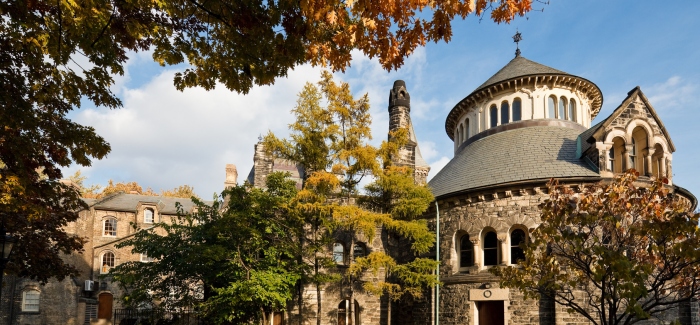Many of the top universities in the US are private. MIT, Harvard, Stanford, Yale, Caltech, Princeton…the list goes on. Public universities are often a cheaper option though, and there are some very strong public universities to choose from. Two of the highest-ranked are the University of Michigan and the University of California, Berkeley (UC Berkeley).
At joint 21st and 27th respectively in the QS World University Rankings® 2018, Michigan and UC Berkeley have very little to separate them. However, there are some key differences to distinguish them, in terms of location, subject specializations and key strengths. Here’s a summary of how these two top public universities in the US compare.
|
|
Michigan |
UC Berkeley |
|
QS World University Rankings® 2018 |
Ranked joint 21st in the world Rated 19th in the world by academics and 58th by employers 126th for research impact (citations per faculty member) 78th for faculty/student ratio 279th for percentage of international students; 204th for percentage of international faculty |
Ranked 27th in the world Rated third in the world by academics and ninth by employers 13th for research impact (citations per faculty member) 358th for faculty/student ratio 267th for percentage of international students; 85th for percentage of international faculty |
|
Subject strengths* |
Ranked 33rd in the world for arts & humanities 49th for engineering & technology 31st for life sciences & medicine 58th for natural sciences 33rd for social sciences & management |
Ranked fourth in the world for arts & humanities Eighth for engineering & technology 14th for life sciences & medicine Seventh for natural sciences Seventh for social sciences & management |
|
Location |
Ann Arbor, a relatively small city in the south of Michigan. |
Berkeley, a city in the San Francisco Bay Area of California, which has a very similar population to Ann Arbor. |
|
Student community |
Approx. 44,700 students enrolled (as of Fall 2016) 28,983 undergraduates; 15,735 graduate and professional students 6,764 international students (15% of total) |
Approx. 40,170 students enrolled (as of Fall 2016) 29,310 undergraduates; 10,863 graduate and professional students 6,654 international students (16.5% of total) |
|
Tuition fees |
For 2017-2018, annual undergraduate tuition fees for non-Michigan residents are $56,763. |
For 2017-2018, undergraduate tuition fees for international students are $42,802 per year. |
*Based on the broad subject areas in the QS World University Rankings by Subject 2017.
QS World University Rankings® 2018
In the QS World University Rankings 2018, Michigan and UC Berkeley are just six places apart – Michigan is joint 21st, while UC Berkeley is 27th. Both have very strong global reputations, but the Berkeley brand is particularly strong. UC Berkeley is ranked third in QS’s huge global survey of academics and ninth in the survey of graduate employers, while Michigan is rated 19th and 58th respectively.
Berkeley also comes out ahead in the measure of research citations per faculty (13th in the world, while Michigan is 126th), suggesting its research is having a wider impact. But Michigan is significantly ahead on faculty-student ratio (78th, while Berkeley is 358th) – an indicator which is intended to give an idea of how much contact time students may be able to expect from academic staff members.
Finally, in terms of international diversity of staff and students, Berkeley receives a much stronger score for the percentage of international faculty members (it ranks within the top 100, whereas Michigan is 204th). However, both universities receive similar scores for their percentage of international students, suggesting they’ve been less successful in attracting students from outside the US.
Subject strengths
Another factor worth considering when comparing these two top public universities in the US is their performance in the latest QS World University Rankings by Subject. In the 2017 edition, both institutions perform well, with UC Berkeley appearing in the top 15 for all the five broad subject areas (achieving its best ranking for arts and humanities, at fourth in the world), while Michigan fares less well. Despite this, it nonetheless appears in the global top 60 for all five areas, achieving its highest score for life sciences & medicine (31st). The table below shows how Michigan and UC Berkeley directly compare for all 46 disciplines covered in the 2017 subject rankings:
|
Michigan and UC Berkeley in the QS World University Rankings by Subject 2017 |
||
|
|
Michigan |
UC Berkeley |
|
Accounting & finance |
=26th |
8th |
|
Agriculture & forestry |
-- |
5th |
|
Anatomy & physiology |
12th |
-- |
|
Anthropology |
7th |
=2nd |
|
Archaeology |
12th |
6th |
|
Architecture |
43rd |
4th |
|
Art & design |
51-100 |
-- |
|
Biological sciences |
30th |
6th |
|
Business & management |
25th |
10th |
|
Chemistry |
37th |
2nd |
|
Communication & media studies |
=18th |
=6th |
|
Computer science |
46th |
4th |
|
Dentistry |
2nd |
-- |
|
Development studies |
-- |
=5th |
|
Earth & marine sciences |
51-100 |
=3rd |
|
Economics |
18th |
4th |
|
Education |
16th |
8th |
|
Engineering (chemical) |
40th |
3rd |
|
Engineering (civil) |
27th |
=2nd |
|
Engineering (electrical) |
25th |
3rd |
|
Engineering (mechanical) |
6th |
=4th |
|
English language & literature |
20th |
4th |
|
Environmental sciences |
28th |
1st |
|
Geography |
-- |
4th |
|
History |
16th |
5th |
|
Law |
29th |
8th |
|
Linguistics |
32nd |
8th |
|
Materials science |
=35th |
3rd |
|
Mathematics |
19th |
6th |
|
Medicine |
24th |
-- |
|
Modern languages |
51-100 |
4th |
|
Nursing |
11th |
-- |
|
Performing arts |
51-100 |
=16th |
|
Pharmacy |
=21st |
-- |
|
Philosophy |
=16th |
8th |
|
Physics & astronomy |
38th |
5th |
|
Politics & international studies |
27th |
9th |
|
Psychology |
11th |
=5th |
|
Social policy & administration |
23rd |
4th |
|
Sociology |
13th |
2nd |
|
Sports-related subjects |
=11th |
-- |
|
Statistics |
13th |
4th |
|
Theology, divinity & religious studies |
42nd |
15th |
Location & student community
Michigan and Berkeley may be difficult to choose between in terms of academic quality, but they certainly offer very different experiences when it comes to location. Over on the west coast in California, Berkeley is part of the San Francisco Bay Area, close enough to provide views of the famous Golden Gate Bridge. A relatively small city, Berkeley boasts a healthy cultural scene, an even healthier appetite for good food, and a strong history of liberal politics. It’s only 13 miles (21km) away from San Francisco, making it ideally located for day trips.
Over towards the eastern side of the US, the University of Michigan is in Ann Arbor, another relatively small city where the university plays a prominent role in sports and cultural events. There’s a reasonable range of arts, music and nightlife venues, as well as watersports on the river and plenty of nearby parks and nature reserves for more outdoorsy students to explore.
The University of Michigan has the larger student population, with more than 44,700 students, while Berkeley has around 40,170. At both, undergraduates constitute the largest segment of the student community – almost 65% at Michigan and 73% at Berkeley.
Tuition fees and living costs
The tuition fees charged at both Michigan and Berkeley vary depending on several factors, including study level, subject and (most importantly) whether you come from within the state or not. This last distinction has the biggest impact. At US public universities, tuition fees are much lower for resident (in-state) students.
To find out exactly what fees you could face, check the university website for the most recent fees information, broken down by course, semester and class enrollments. To give an idea of the figures, Berkeley’s undergraduate fees for 2017-2018 are $16,486.50 per year for students from within California, and $43,168.50 for students from outside the state (including international students). Graduate tuition fees vary depending on the program, and also differentiate between state residents and everyone else.
At Michigan, tuition fees are broken down into two parts: Fall/Winter and Spring/Summer. The latest estimates add up to a total of $18,003 per year for in-state undergraduates, $56,763 for out-of-state undergraduates, $27,822 for in-state graduate students, and $55,777 for out-of-state graduates.
For an idea of overall costs – including tuition fees, accommodation, food, transport, health insurance and other expenses – Berkeley advises undergraduate students should budget $24,090-33,400 (in-state) - with variation depending on whether students are staying with relatives, on campus or in private accommodation. No figures are directly available for out-of-state residents, but students can use the university’s net price calculator to get an idea of their costs.
Michigan’s total estimated undergraduate budgets for the same items add up to $35,833-55,058 (in-state) and $74,593-83,013 (out-of-state) – making this the more expensive option of the two. However, the majority of students do not actually pay this much, especially those from within the US who qualify for various need-based financial aid schemes. Speaking of which…
Financial support
Higher education in the US is never cheap, but it also doesn’t usually end up costing as much as advertised, as many students qualify for financial aid. About 50% of non-resident undergraduate students at Michigan and two-thirds of all undergraduates at Berkeley receive some form of financial aid. This includes scholarships, grants, subsidized loans and work-study aid (a federally subsidized scheme which helps students earn money through part-time work).
However, most financial support schemes are open only to students from within the US. For international students, alternative sources of support may be available via international agencies such as the Aga Khan Foundation or Fulbright Program for Foreign Students. Graduate students may also be able to find part-time work within the university, as teaching or research assistants. Finding financial aid which you’re eligible for is likely to require some research, but get started by checking our list of scholarships to study in the US.
Which of the US’s top public universities would you choose? Share your opinion in the comments below, and find out more about studying in the US with our complete guide.













